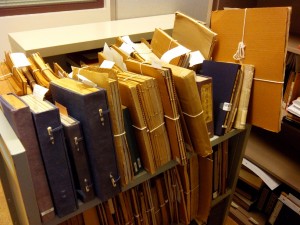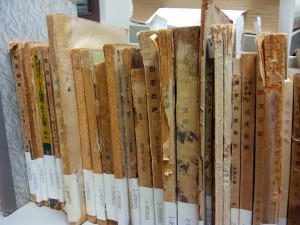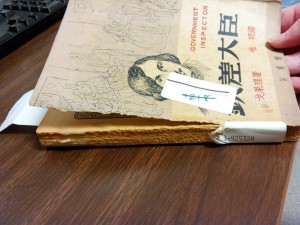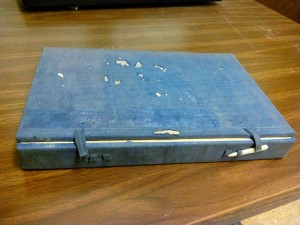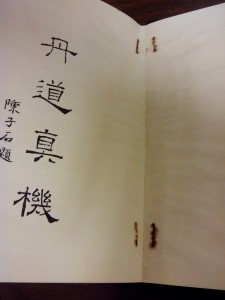Many items included in the project suffer from brittle or fragile paper, past damage from handling or pests, and poor storage conditions. Others are in physical formats (e.g., stab-sewn softcover bindings, unbound plates, rubbings) which require additional housing for safe shelving and handling. Many Republican-period materials in particular were printed on acidic paper and the binding was very poor. Without proper preservation treatment, these precious resources cannot be shelved properly or made accessible for our users.
Both institutions are taking steps to preserve their Chinese collections. Over $30,000 of internal funding has been devoted to preservation boxes for the special collections materials at UW. UW’s new senior conservator will guide and support the preservation of our Chinese collections, among other endangered rare materials. UW has already applied for and received funding specifically to start working on stabilizing and housing the highest-priority CLIR project materials that are in poor condition. These efforts will help ensure the long-term health of this collection making the materials secure and usable for contemporary and future scholars.
Preservation Policies and Practices at UW: A Brief Introduction
The Preservation team typically starts with housing for damaged (and at-risk) items, with repair as a possible future step for items that receive or are expected to receive high use. Materials are sent to Preservation, and their team determines the proper treatment for each case.
Housing for damaged materials often takes the form of a preservation box. These boxes are purchased from an outside vendor. First, the item is measured, and the vendor makes an individual, fitted box (of acid-free material) for that item.
Clamshell (opens like a shell) and four-flap (flaps fold in to cover the item) are two kinds of preservation boxes. Pam-binding is another option that can be used with thin/lightweight materials.
